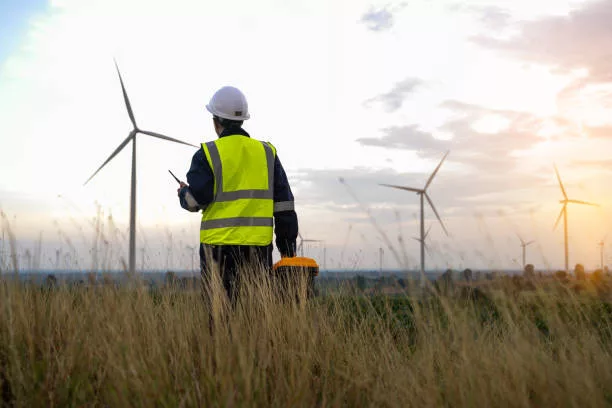The wind energy sector in the U.S. is experiencing a surge, with expectations for significant expansion in the coming years. This upswing carries with it an increased need for skilled workers to propel the industry forward and reach ambitious national goals.
The urgency to bridge the gap between workforce demand and supply is underscored in the comprehensive study by the National Renewable Energy Laboratory (NREL), titled “National Wind Workforce Assessment: Challenges, Opportunities, and Future Needs“. By 2030, the landscape suggests a potential mismatch – with the need for 258,000 workers, yet an estimated supply of only 134,000 full-time employees, leaving a substantial deficit of approximately 124,000 workers.
Unpacking the Wind Workforce Gap
Jeremy Stefek, an NREL researcher, calls attention to the critical barriers in recruiting a well-trained workforce poised to support a net-zero-carbon economy by 2050. Highlighting the importance of this link, Stefek emphasizes the need to facilitate smooth transitions from education and training to entry-level roles and long-term clean energy careers.
The Innovative Approach to Quantifying Workforce Challenges
NREL researchers, including Stefek, have pioneered a system dynamics model – the first of its kind in this context – to bring clarity to the complex issue of workforce supply and demand within the U.S. wind energy sector.
Their novel model aligns with insights from industry stakeholders, ranging from students to wind energy companies, who have illuminated the workforce woes that include a lack of sufficiently trained candidates, shortage of applicants, and job location desirability issues.
Strategic Solutions for Workforce Development
While the shortfall of trained wind energy professionals paints a challenging picture, the NREL report offers actionable solutions. It outlines critical measures that stakeholders, from industry to academia, can undertake to stem this tide:
- Promoting Sector Awareness: Foster partnerships between the wind energy sector and educators to develop relevant curriculum and raise student awareness about job opportunities in the field.
- Expanding Training Opportunities: Encourage the establishment and growth of internship and apprenticeship programs to provide hands-on training and technical skill development for students.
- Building Professional Networks: Utilize programs like the DOE Collegiate Wind Competition managed by NREL to help students gain practical experience and connect with potential employers in the wind energy industry.
- Driving Inclusivity in Wind Energy: Form alliances between the industry and community-centric organizations with diversity, equity, and inclusion goals, broadening access to wind energy careers for a diverse pool of talent.
Stefek asserts the necessity for increased educational support and improved perception of wind energy careers amongst students to help reduce the workforce gap.
Supporting these insights, NREL has developed targeted presentations to engage various stakeholders – from educators to industry members – offering them perspectives and strategies on narrowing the workforce divide and enhancing hiring processes:
- Presentations designed for educators engaging students about the value of wind energy education.
- Resources for industry leaders to strategize on overcoming hiring obstacles.
- Insights for current industry workers on the workforce challenges from their perspective.
- Guidance for educational institutions and wind industry firms on collaborative efforts to attract job seekers and alleviate hiring difficulties.
